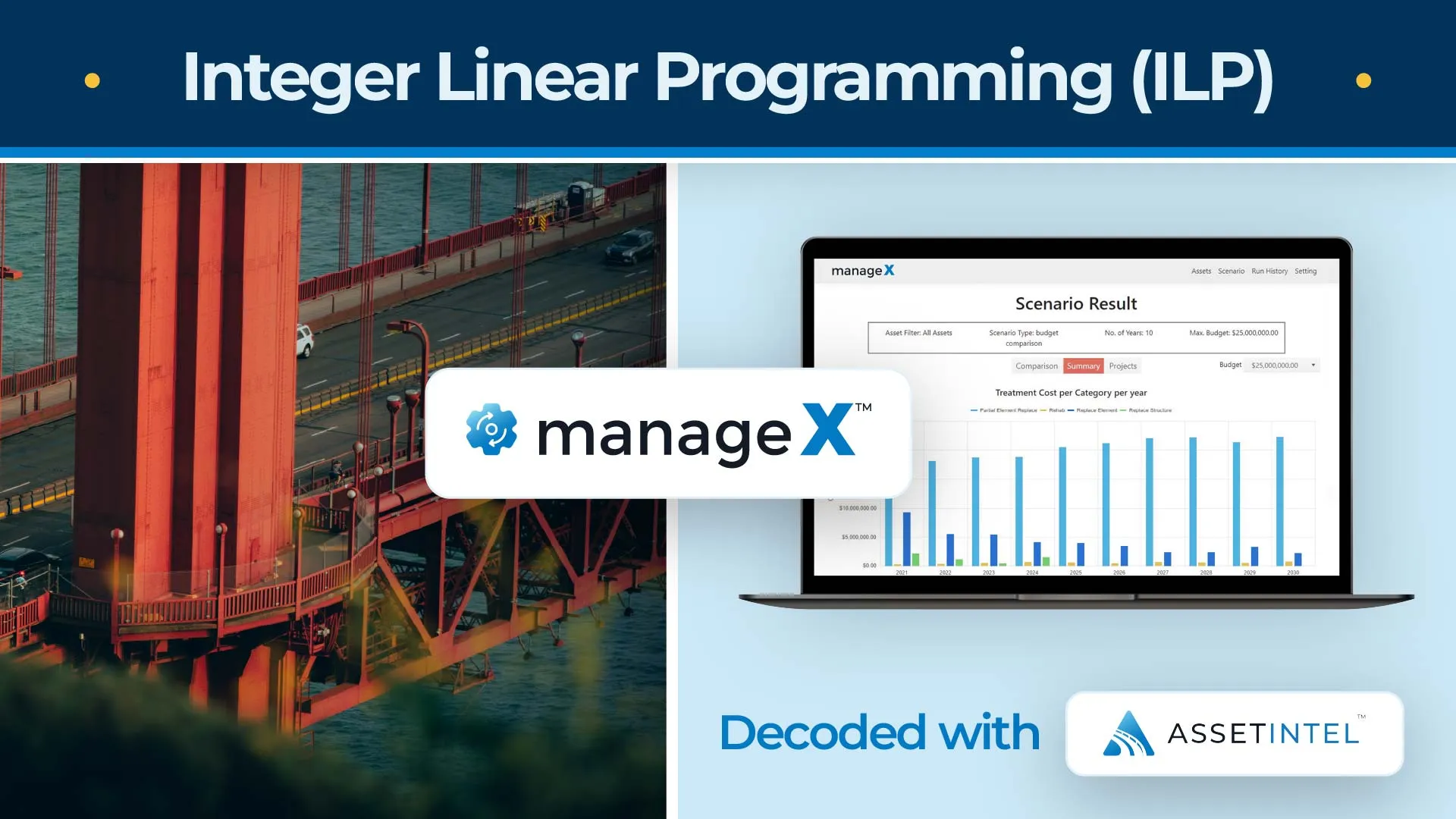
Welcome to the Decoded Series, where we unpack the "How" behind smarter infrastructure planning.
In this edition, we’re spotlighting Integer Linear Programming (ILP), a decision-making tool that helps infrastructure agencies maximize their resources.
With limited budgets, strict timelines, and performance expectations, making the right choices isn't just about strategy. It’s about math. ILP quietly powers the decisions that lead to practical, optimized, and impact-driven plans.
Let’s take a closer look at what makes it tick.
When planning gets complicated, ILP brings logic to the table.
It takes all your constraints, such as total budget, caps per work type, staffing limits, performance goals, and timelines, and turns them into a clean mathematical model. Then, it solves that model to find the most valuable plan possible.
You're not juggling trade-offs manually or relying on instinct. ILP evaluates thousands of combinations in seconds and points to the one that works best within the limits you’ve set. That’s how complexity turns into clarity, and clarity turns into action.
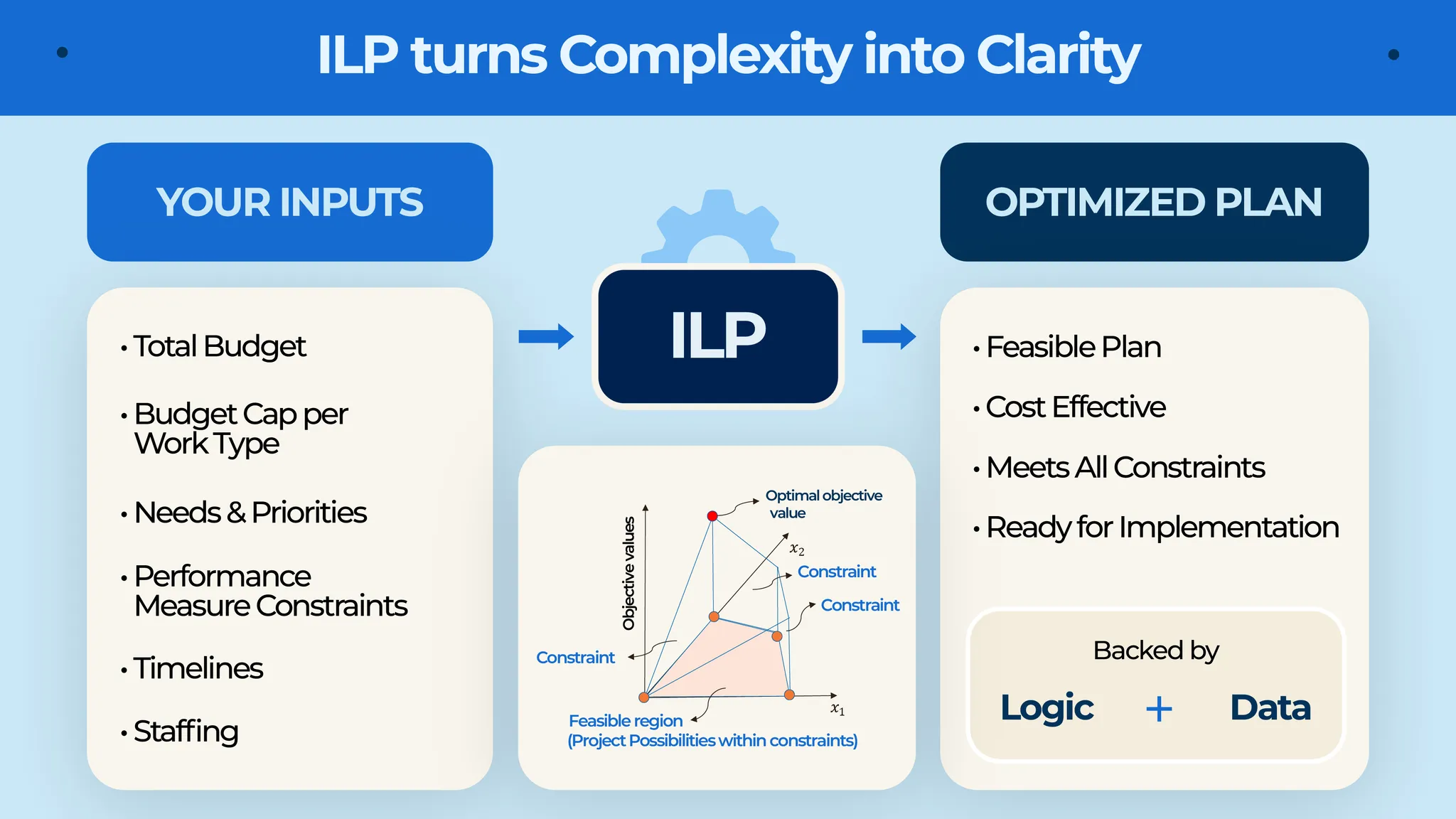
ILP works by building a model that thinks the way you do when planning real-world projects. It starts with a clear goal, maybe minimizing cost or maximizing condition, and then applies hard limits like budget caps, staffing levels, or policy rules. The result is a mathematical representation of the decisions you're trying to make.
What makes ILP especially powerful is that it works with whole numbers. That matters when you're deciding on actual projects, not theoretical fractions of one. It mimics reality.
A common workaround many agencies still use is IBCR - Incremental Benefit-Cost Ratio. It ranks options based on return per dollar, but it doesn’t always consider the bigger picture. It’s quick, but not always accurate.
ILP, on the other hand, scans every valid combination and returns the truly optimal one. It's not just smarter, it’s built to reflect the way infrastructure decisions really work.
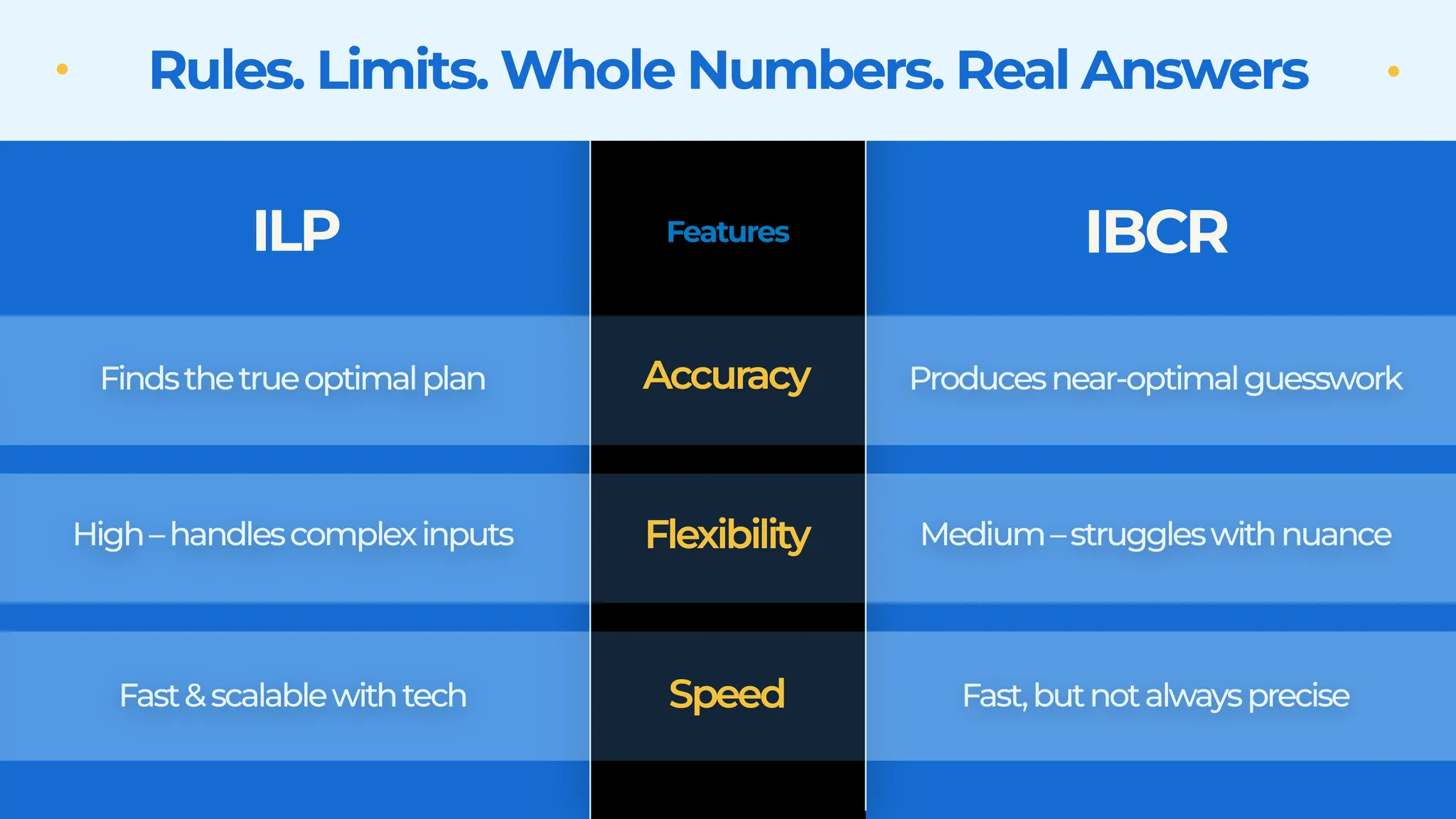
ILP isn’t just something manageX™ supports behind the scenes. It’s baked into the core of how the system thinks, plans, and recommends.
When you feed manageX™ with real-world data like inventory, budget caps, policy constraints, and timelines, the ILP engine gets to work. It considers every angle, balances the trade-offs, and identifies the set of projects that deliver the greatest value within your limits.
You can also test multiple what-if scenarios and compare outcomes with just a few clicks. Whether you’re planning across one year or ten, ILP ensures your recommendations aren’t just data-driven - they’re optimized for long-term impact.
This isn’t theory. It’s built-in intelligence with purpose.
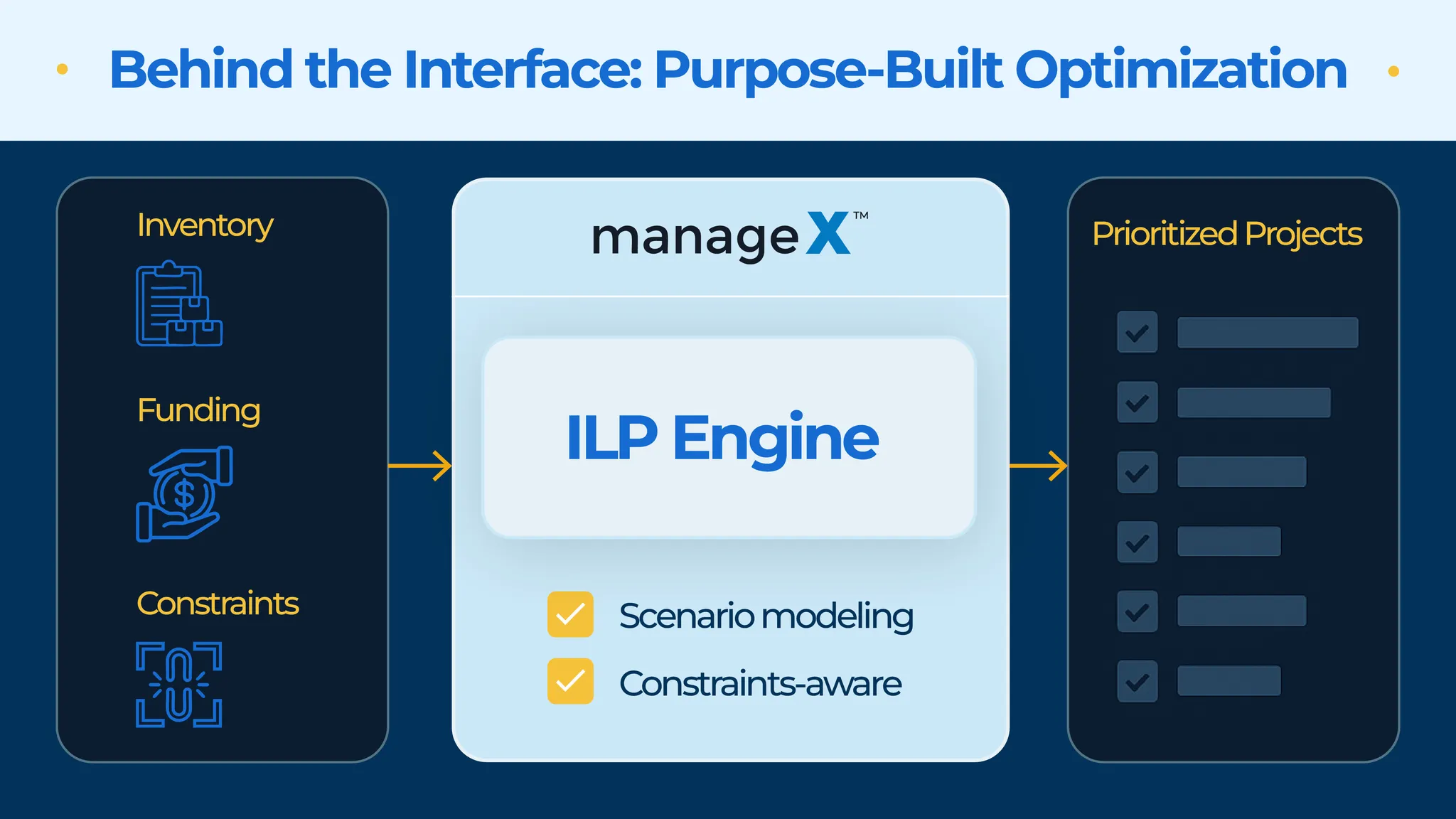
Good planning isn’t just about picking the right projects. It’s about being able to explain why those choices make sense.
ILP gives agencies that level of confidence. Every recommendation comes with a trail, showing which constraints were applied, how trade-offs were resolved, and what objective the model worked toward. If priorities shift or assumptions change, you can update inputs and rerun the model instantly.
One of ILP’s most practical strengths is flagging when your goals simply don’t align with available resources. If the current budget or performance targets make a plan infeasible, ILP doesn’t just fail silently - it signals the issue clearly. That means fewer surprises later and more room for proactive adjustments.
By reducing subjectivity and showing how every decision holds up under scrutiny, ILP becomes a tool for governance, not just guidance.
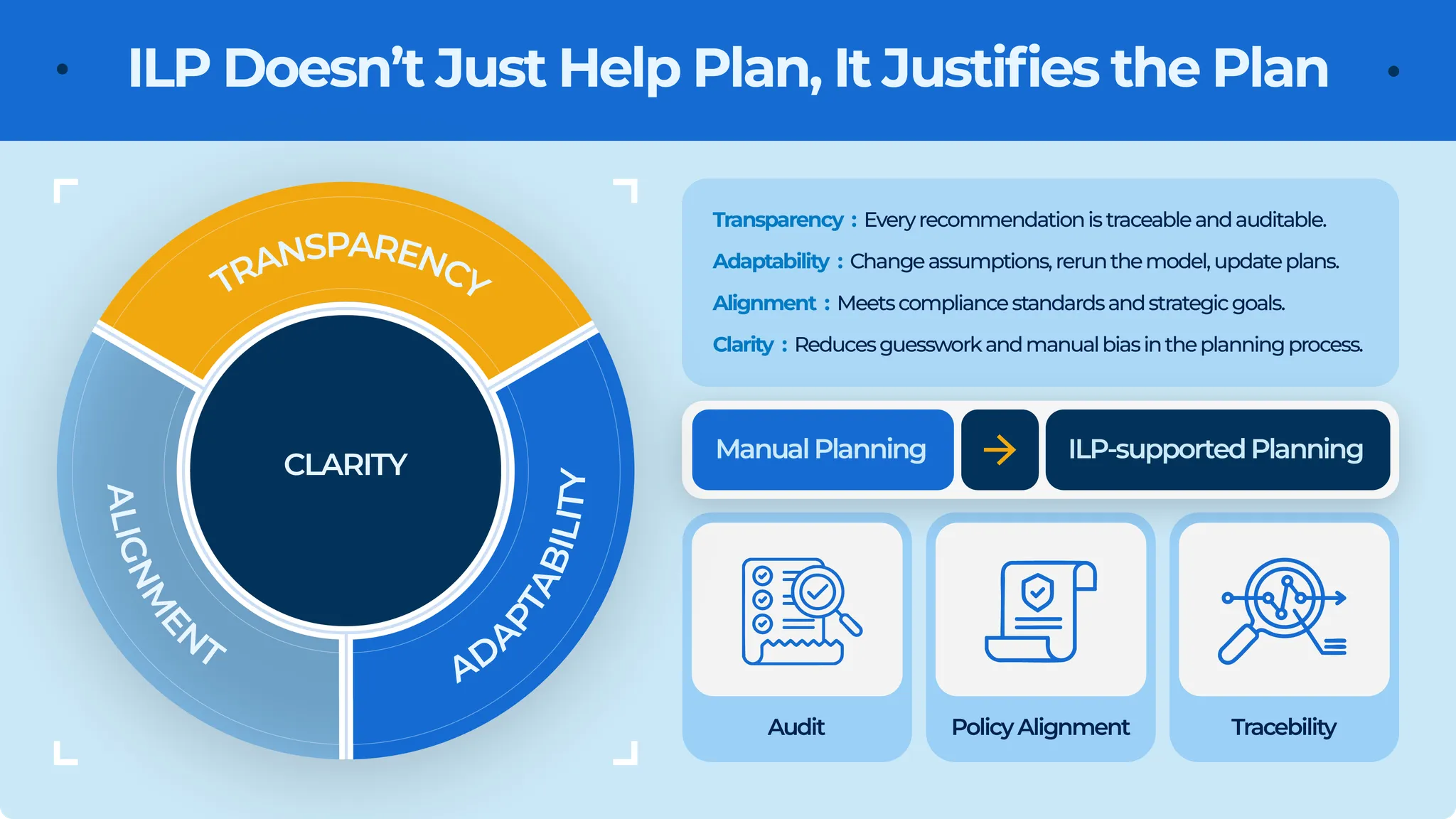
Planning doesn’t stop at a spreadsheet; it needs to flex with changing realities on the ground. ILP, as used in manageX™, is designed for that kind of dynamic environment.
Whether it's accommodating shifting performance targets or managing resource shortages, ILP ensures every decision adapts without compromising direction. You can model multiple scenarios, compare trade-offs, and land on a plan that actually fits the moment.
And when the numbers don’t add up? ILP doesn’t hide it. It alerts you when goals can’t be met under current constraints, helping teams respond early rather than course-correct late.
It’s more than optimization. It’s built-in agility for planning with confidence, even when conditions change.
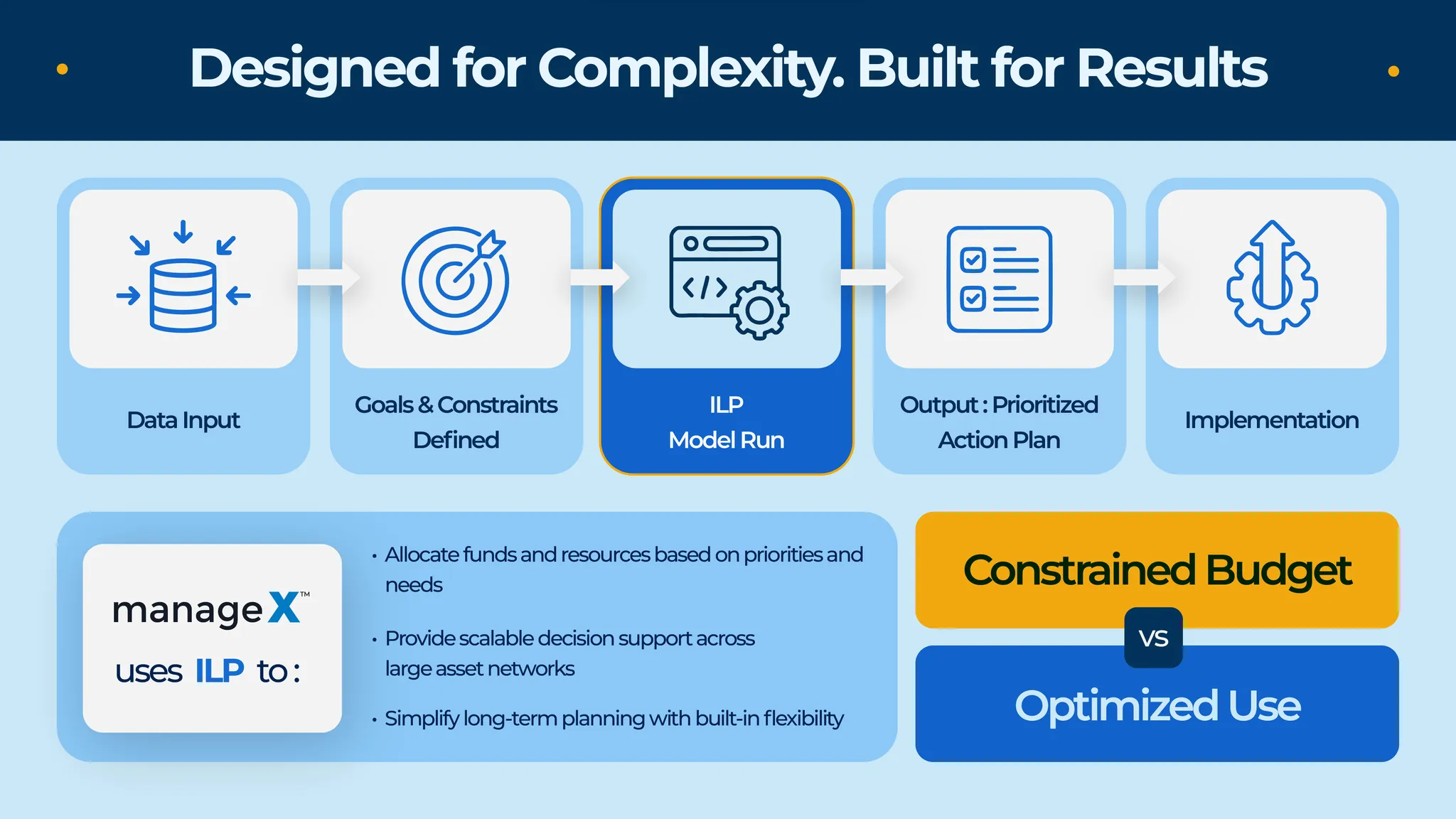
Big decisions often come down to trade-offs. Do you stretch the budget or scale back expectations? Focus on high-need areas now or balance long-term outcomes? With ILP built into manageX™, these aren’t guesses. They’re calculated; transparent decisions made with purpose.
ILP gives agencies the structure to plan across all levels, from tactical budgeting to long-term strategic alignment. You get clear visibility into performance constraints, policy alignment, and funding efficiency, all in one place.
And when conditions change, the model keeps up. You can adjust assumptions, rerun the numbers, and update your priorities, all while keeping plans defensible and on target.
At its core, ILP isn’t about making things more complex. It’s about helping infrastructure leaders make smarter choices, backed by math, built for resilience, and ready for what’s next.
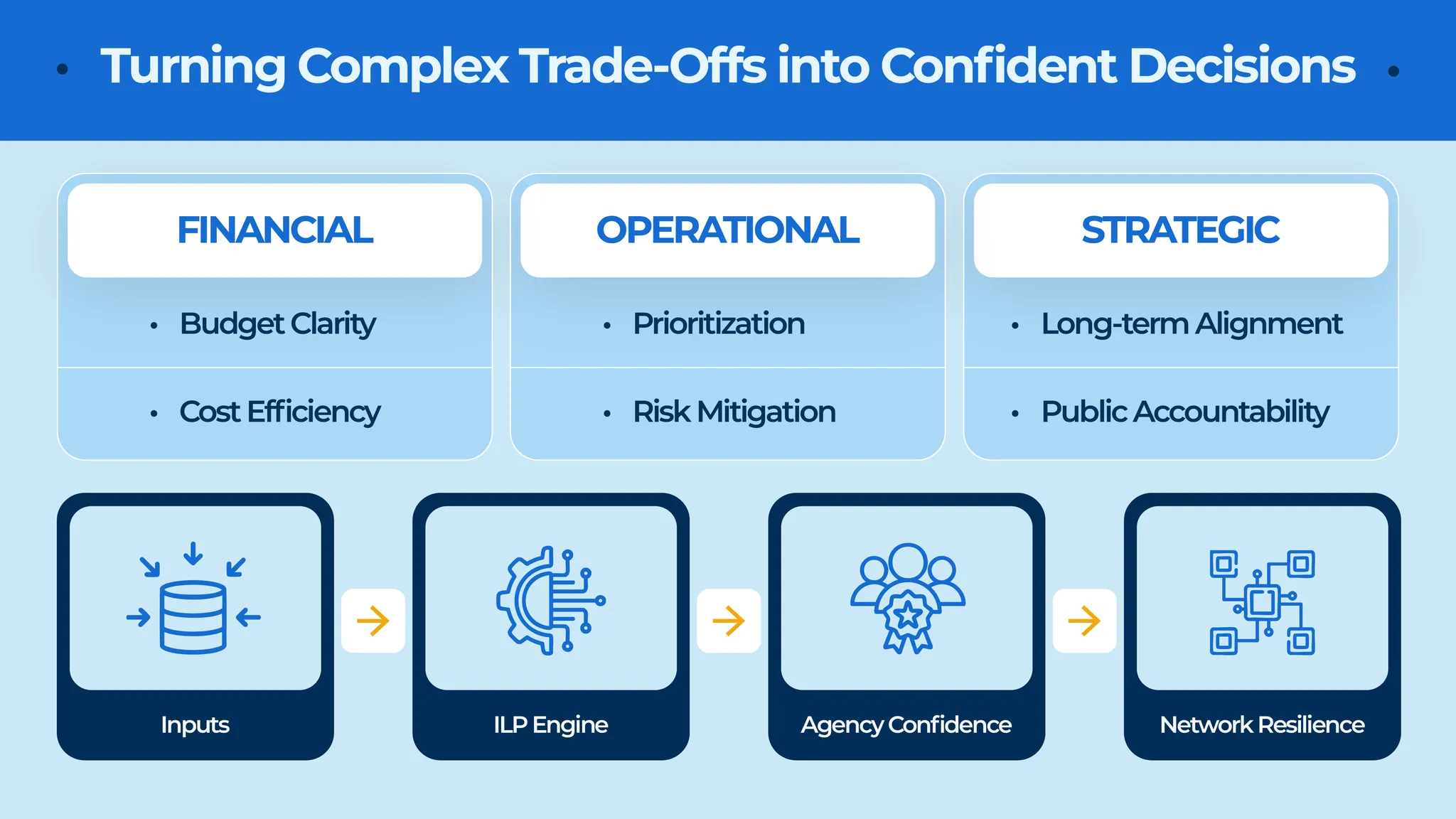
Want to see how manageX™ uses ILP to improve infrastructure decision-making?
Let us show you how smarter math powers smarter infrastructure. Schedule a Demo